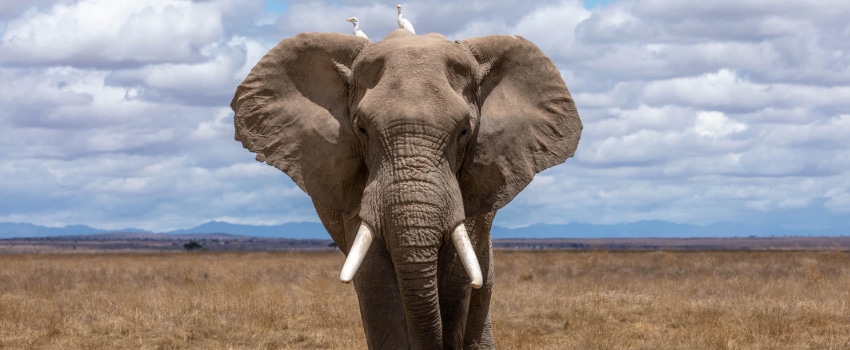
African elephants can be found within 37 countries across the continent. However, sadly they are still rapidly declining in numbers. Any innovation in the ability to track and monitor these beautiful animals is welcome news.
Vocal vibrations
Scientists studying African elephants have found that communication between them is done via a variety of vocal noises. These noises are used to greet and warn each other and even court potential mates. Some of the noises, known as rumbles, are virtually too low for human hearing. As well as sending sound waves through the air the elephants rumbles also cause vibrations in the ground.
Up until now the vibrations within the ground haven’t been studied. It is believed that elephants can communicate with one another over several kilometres. However it is not known as to what extent the vibrations are utilised. In studying them, scientists hoped it would aid them with tracking elephants.
Microphones and seismometers were set up at a watering hole near Mpala Research Centre in Kenya. The watering hole was known to be favoured by elephants. Seismometers are extremely sensitive pieces of equipment that pick up vibrations in the earth, usually measuring earthquakes and explosions from great distances away.
Locating elephants accurately
For the first time ever it was possible to accurately locate elephants by measuring the vibrations in the ground from their low rumbles. The devices picked up the rumbles from over 500 metres away. The accuracy was to within a few metres, and the seismic sensors were more accurate than the microphones. It is not unusual for microphones to be used to track animals but seeing a greater degree of accuracy using vibrations within the ground could offer a new way of tracking wildlife.
Researchers are yet to decipher how the elephants pick up the vibrations and if they can decipher their meaning. However it is possible that the rumbles within the ground could enable elephants to locate one another from far away. Sound can be interrupted by the noise of rain or wind, however the seismic rumbles are free from interference.
Aiding elephant protection
Being able to accurately track elephants is a huge bonus in the bid to protect them. If they wander in to territory where they might be in danger, such as unguarded areas, then rangers need to react quickly to prevent poaching or other kinds of human / animal conflict.
Beyond elephants, researchers believe that the seismic monitoring has further uses. They think it could help scientists studying hoofed animals such as endangered species of giraffe and zebra. Following the vibrations of their footsteps may aid the ability to count populations, and learn more about their movement and social behaviours.
To support WWF and the work they do for African Elephants please visit our WWF animal adoption page.





